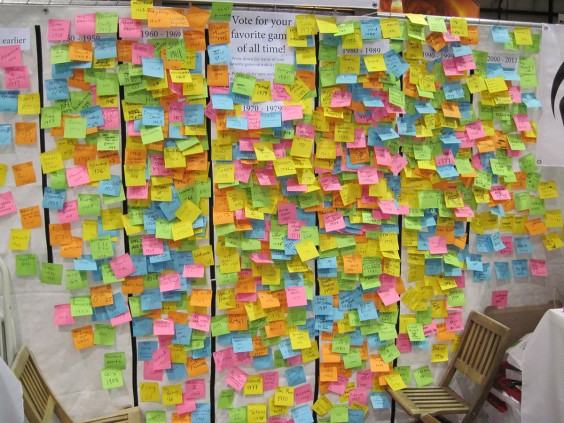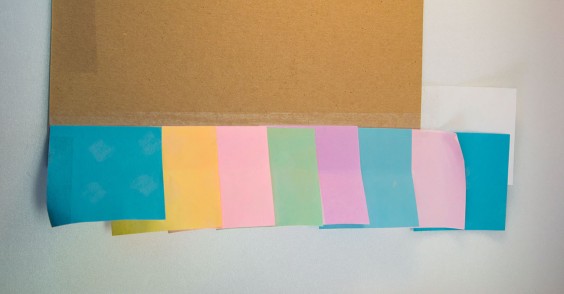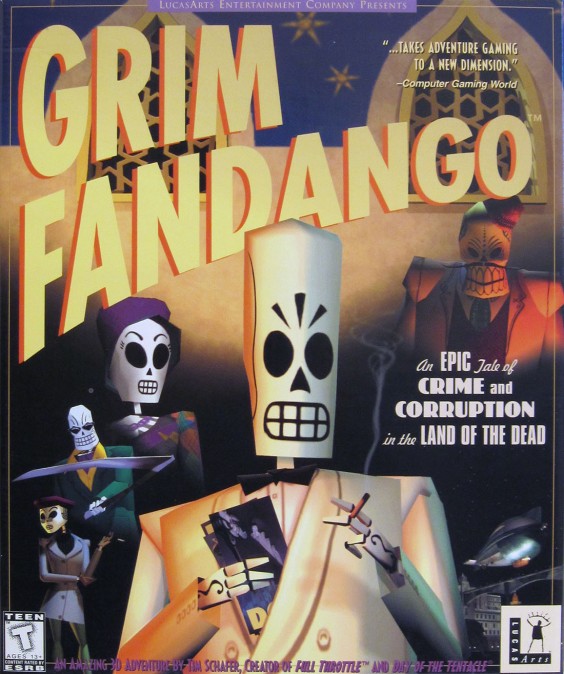Adventures with Light
Written by Judith // October 31, 2014 // At the Museum, Newsletters // No comments
Letter from the Director
Last month brought a welcome and much needed boost in volunteers, beginning with five young men from the Evergreen Valley High School Key Club, all high school seniors, at our First Saturday Volunteer Day. They were hard workers and quickly learned the intricacies of getting all the information about games into the right database fields. They were unfamiliar with almost all the games we worked with, in contrast to the older volunteers who came to Wednesday Night Accessioning. It’s a lot of fun to go through the boxes of wonderful games and memorabilia that people donate to our collection, much like the old-fashioned tales of rummaging through grandma’s attic where the toys and mementos of childhoods find a resting place until they are rediscovered for the next generation.
Join us! You can sign up for our First Saturday and monthly Wednesday evening accessioning events at Eventbrite. Learn how to handle museums artifacts, get a preview of new acquisitions, and wander down memory game lane with us.
Judith Haemmerle, Executive Director
The Post-it Experiments
When we did our first Maker Faire exhibit in 2011, we realized it would be difficult to tempt people into a 10’x10′ booth to see what we had, so we came up with another way to engage visitors. We stopped passersby and asked them what their favorite game was. Then we had them write the year they were born (because no one ever knows when a game was released) and the name of the game on a Post-it note. We divided a space on the back wall by decade and attached the slips. Using lots of colors made it more interesting to look at. Ben entered all the results into a spreadsheet – all 864 of them. Even though it was totally unscientific and useless as research, it was entertaining and there were some interesting things to be found in the data.
First, the game chosen by the oldest (over 60) and the youngest (5) participants was the same game! (We’ll tell you what later – got any guesses?) Second, the decade of people born in the 1960s chose a lot of arcade games. There weren’t any before then, and they fell off sharply after 1970. For those of you who like raw data, it’s available here.
And then I found a use for some of the leftover Post-its.
We had to buy a lot Post-its to get a nice selection of colors. They became a basic supply around the museum, just like any office. One day I was fretting about the fact that we had no UV protection on the windows because light damage is irreversible. It’s possible to repair many kinds of damage to artifacts, but things that have faded are faded forever. I wanted to see what kind of risk the things on display were at, so I made a cheap and easy color fade tester out of Post-its.
Light Damage is Irreversible (part 2 of The Post-it Experiments)
I took a sheet of cardboard from the back of a pad of notebook paper and lined up the different colored Post-its so that they would be half behind the cardboard and half exposed. I also overlapped them for no particular reason. And then I hung it in the window.
Months went by. I don’t know how many, because I forgot to date it. I’d guess six or eight. We did put UV shielding on the fluorescent bulbs, but the windows stayed unprotected. We finally bought shielding, and before it was installed, I took down the color fade tester and asked Brian to take some photos of it. The photo at the top is how it looked from inside, unexposed to light. The photo below is what it looked like from the outside, where the light had been shining on it.
The photo below is what it looked like when we flipped back the notes to compare the part protected by the cardboard with the part in the sun.
The contrast between the original colors and the part exposed to sunlight is striking, and this is the back of the notes; the fading went right through to the back. The different colors that overlapped even reacted together, so that the orange lying on the blue not only faded to yellow, it also picked up a greenish tinge from the blue. Some of the pink and fuchsia are faded almost to white; those were two different colors when we started: a plain pink and a bright fuchsia.
If you’ve been wondering whether or not the extra money for UV protective glass over the photos and artwork you hang in your bright rooms if worth it, this should settle the matter. You can easily do the same experiment yourself. You can see our version at DGM, and we’ll be making more and putting them is a variety of different places. Yes, it’s safe to do this at home – all you need is some opaque cardboard, tape, and a lot of sticky notes. The exhibit at Maker Faire is optional.
Oh, and that game that spanned generations? Angry Birds, of course.
Adventure Games Part 3: The Decline
By the late 1990s, the adventure game genre was in decline. Some credit this to Sierra’s increasingly difficult games, which by this point almost required a walkthrough to play. Lucasfilm games were still impossible to lose, but Lucasfilm had followed in Sierra’s footsteps with puzzle difficulty, making them much harder to win. In 1990, Lucasfilm became part of LucasArts Entertainment Company, and in 1993 LucasArts became the name of the game division.
Grim Fandango was released in 1998 and received many awards, including GameSpot’s Game of the Year, as well as extremely positive reviews. Despite this, sales were quite low and it was a commercial failure, the first LucasArts game that did not make a profit. In the aftermath, both LucasArts and Sierra canceled games in development, citing a change in the market.
The classic adventure game genre stagnated after Grim Fandango. The previously rapid release of new games became a slow trickle, with only a small handful of notable games released between 1999 and 2006. Despite the industry-wide slump, niche franchises survived. The “Nancy Drew” series by Her Interactive, which began with the 1988 release of Secrets Can Kill, continued into its second decade of steady releases. The “Leisure Suit Larry” series also continued unabated, with Leisure Suit Larry Goes Looking for Love (in Several Wrong Places) or Leisure Suit Larry 2 (1988), Leisure Suit Larry III: Passionate Patti in Pursuit of the Pulsating Pectorals (1989), Leisure Suit Larry 5: Passionate Patti Does a Little Undercover Work (1991), Leisure Suit Larry 6: Shape Up or Slip Out! (1993), and Leisure Suit Larry: Love for Sail! or Leisure Suit Larry 7 (1996). (It was impossible to resist listing those titles.)
The enduring popularity of the earlier classic adventure games received an oblique compliment when Homestar Runner, an animated Internet cartoon, released a text adventure parody, Thy Dungeonman, in 2004, followed by Peasant’s Quest, a parody of Sierra’s Quest titles. Peasant’s Quest used a system closely modeled on Sierra’s Adventure Game Interpreter, which was used to write the Quest games.
As the genre faded in the United States, it was on the rise in East Asia. Some of Japan’s earliest games from the 1980s were bishojo games, pretty girl games, which are a form of dating simulation based on anime-style characters or with eroge (erotic) content. In 1983 Portopia Serial Murder Case, a mystery, was released and set the stage for further development of the genre; Murder Club (also called J.B. Harold Murder Club) was one of the first released in the West (1986) and was received positively. In 2006, nearly 70% of PC games released in Japan were visual novel games. In an interesting reversal of the American tendency to convert movies into game franchises, these games are often adapted to become anime TV shows.
Next month: Part 4 – Rebirth
This Month’s Trivia Questions
Why was there no 4th game in the Leisure Suit Larry series, going straight from #3 to #5?
A) Writer’s block
B) Deliberate marketing ploy
C) A time-traveling character from Space Quest deleted it
D) All of the above
Last Month’s Trivia Answers
Space Quest 1 makes a flashback appearance in a later game in the series, with one piece changed. Which band cameo was altered to avoid legal trouble?
ZZ Top.
How to circumvent the change and see the original can be found at Movie-Censorship.com. There are also great screenshots of the before and after. Check it out!






